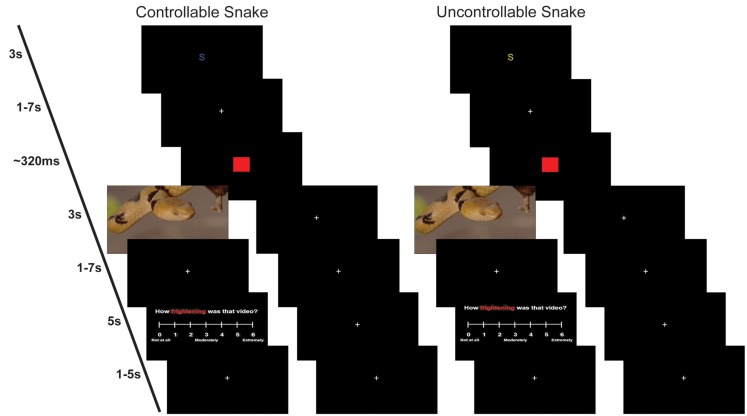Figure 1.
Example trials. Left: a controllable snake trial where participant did not press the button fast enough and saw a video of a snake (left branch) or where participant pressed the button fast enough and did not see a video of a snake (right branch). Right: an uncontrollable snake trial where participant saw a video of a snake (left branch) or where participant did not see a video of a snake (right branch). The cue, presented for 3 s, was either yellow indicating an uncontrollable trial or blue indicating a control trial. The letter S indicated the potential video contained a snake. Following the cue, a fixation cross appeared for 1–7 s. We modeled the anticipation period as the time of the cue plus fixation cross. Following the fixation cross, a red square would appear, and the participant pressed a button as quickly as possible. Depending on the trial type and speed of the response, either a video or fixation cross would appear for 3 s. This was followed by another fixation cross for 1–7 s. If the participant saw a video, then they had 5 s to answer a rating question using a Likert scale. The scale was followed by a final fixation cross for 1–5 s before the onset of the next trial.

